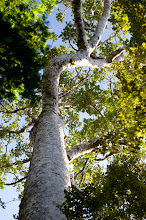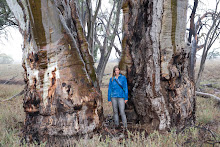PETROLEUM IS NOT A 'FOSSIL FUEL'...
BUT ORIGINATES FROM DEEP ON-GOING GEO-CHEMISTRY
and/or from ANCIENT EXTRA-TERRESTRIAL SOURCES LIKE COMETS
FLETCHER PROUTY ON ORIGIN OF 'FOSSIL FUELS'
"IF WE DIG PRECIOUS THINGS FROM THE LAND, WE WILL INVITE DISASTER" Hopi Prophecy
NOTE FROM JEFF: 'Abiotic' means 'not having to do with living organisms.' Conventional 'wisdom' and mainstream science tell us that hydro-carbon compounds like petroleum are the result of fossilized organic matter from prehistoric plants and animals having been subjected to aeons of high pressure and temperature. Implicit in this belief is the finite amount of these substances present on our planet.
NOTE FROM JEFF: 'Abiotic' means 'not having to do with living organisms.' Conventional 'wisdom' and mainstream science tell us that hydro-carbon compounds like petroleum are the result of fossilized organic matter from prehistoric plants and animals having been subjected to aeons of high pressure and temperature. Implicit in this belief is the finite amount of these substances present on our planet.
Massive solid evidence exists, however, for the 'abiotic' origin of petroleum, whereby these compounds arrived on Earth from extra-terrestrial sources, possibly comets (Velikovsky, Worlds in Collision), and were...and still are...being created by chemical and geological processes ongoing deep in the Earth's mantle.
The implication is that abiotic petroleum is unlimited in supply; geophysical exploration techniques probing deeper and deeper into the Earth are finding oil at depths previously thought to be impossible.
The constant replenishment of deep petroleum deposits represents a worst-case scenario for the future of life as we know her: rather than eventually 'running out', after who knows how many 'wars of aggression' have been under-taken to secure resource control for the dominant hegemones, we are faced with an unending supply of planetary blood feeding the vampire of military-industrial civilization.
With an unlimited 'food' supply, the cancer of technegenous 'civilization' will continue to spread over the surface of the Earth, destroying all life in its path and assimilating the remnants into a 'powaqatsi' nightmare of machines and synthetic 'life' forms.
The only possible hope we have is for large numbers of people voluntarily to stop consuming hydro-carbon fuels, primarily through the light-years of unnecessary driving that 'modern man' performs without question.
Most people are unaware that a large portion of the whole field of organic chemistry, which has provided us with the most toxic and mutagenic substances known to exist other than synthetic radio-nuclides, was born from the discovery of petroleum.
Petroleum and all its constituents and derivatives are highly toxic to biological life.
Fossils From Animals And Plants Are Not Necessary For Crude Oil And Natural Gas, Swedish Researchers Find
What would happen if it were proven that "fossil fuels" weren't the result of decayingplant and animal matter, were actually created within the Earth due to simple chemistry and you could not be scared into believing that we were "running out" of oil and natural gas?
Estimates of how much crude oil we have extracted from the planet vary wildly. As late as May of 2009 a report published in the International Journal of Oil, Gas and Coal Technology suggested that we may have used more than we think.
The idea that we are running out of oil is not a new one. Scientists have told us that oil is a limited resource which was formed millions of years ago by the decaying vegetation and biomass of extinct species of plants and animals. With an estimated 1- trillion barrels of oil already extracted from deep wells since commercial drilling began around 1870, many predict that we are nearing the mid-point of remaining oil on the planet.
But there have always been those who claim that oil is a natural substance that forms automatically in the Earth's mantle. They say that it is virtually everywhere, if you can drill deep enough to tap it.
Proponents of so-called "abiotic oil" claim that the proof is found in the fact that many capped wells, which were formerly dry of oil, are found to be plentiful again after many years, They claim that the replenished oil is manufactured by natural forces in the Earth's mantle.
Critics of the abiotic theory disagree. They claim that capped wells may appear to refill after a few years, but they are not regenerating. It is simply an effect of oil slowly migrating through pore spaces from areas of high pressure to the low-pressure area of the drill hole. If this oil is drawn out, it will take even longer for the hole to refill again. They hold that oil is a non-renewable resource generated and deposited under special biological and geological conditions.
Until now these believers in "abiotic oil" have been dismissed as professing "bad science" but -- alas -- a new study has proven them correct!
Reported in ScienceDaily, researchers at the Royal Institute of Technology (KTH) in Stockholm have managed to prove that fossils from animals and plants are not necessary for crude oil and natural gas to be generated. The findings are revolutionary since this means, on the one hand, that it will be much easier to find these sources of energy and, on the other hand, that they can be found all over the globe.
"Using our research we can even say where oil could be found in Sweden," says Vladimir Kutcherov, a professor at the Division of Energy Technology at KTH.
Together with two research colleagues, Vladimir Kutcherov has simulated the process involving pressure and heat that occurs naturally in the inner layers of the earth, the process that generates hydrocarbon, the primary component in oil and natural gas.
According to Vladimir Kutcherov, the findings are a clear indication that the oil supply is not about to end, which researchers and experts in the field have long feared.
In its simplest form, the theory is that carbon present in the magma beneath the crust reacts with hydrogen to form methane as well as a raft of other mainly alkane hydrocarbons. The reactions are more complicated than this, with several intermediate stages. Particular mineral rocks such as granite and other silicon based rocks act as catalysts, which speed up the reaction without actually becoming involved or consumed in the process. Experiments have shown that under extreme conditions of heat and pressure it is possible to convert iron oxide, calcium carbonate and water into methane, with hydrocarbons containing up to 10 carbon atoms being produced by Russian scientists last century and confirmed in recent US experiments. The absence of large quantities of free gaseous oxygen in the magma prevents the hydrocarbons from burning and therefore forming the lower energy state molecule carbon dioxide. The conditions present in the Earth's mantle would easily be sufficient for these small hydrocarbon chains to polymerise into the longer chain molecules found in crude oil. |
Vladimir Kutcherov adds that there is no way that fossil oil, with the help of gravity or other forces, could have seeped down to a depth of 10.5 kilometers in the state of Texas, for example, which is rich in oil deposits. As Vladimir Kutcherov sees it, this is further proof, alongside his own research findings, of the genesis of these energy sources -- that they can be created in other ways than via fossils. This has long been a matter of lively discussion among scientists.
"There is no doubt that our research proves that crude oil and natural gas are generated without the involvement of fossils. All types of bedrock can serve as reservoirs of oil," says Vladimir Kutcherov, who adds that this is true of land areas that have not yet been prospected for these energy sources.
But the discovery has more benefits. The degree of accuracy in finding oil is enhanced dramatically -- from 20 to 70 percent. Since drilling for oil and natural gas is a very expensive process, the cost picture will be radically altered for petroleum companies, and in the end probably for consumers as well.
"The savings will be in the many billions," says Vladimir Kutcherov.
To identify where it is worthwhile to drill for natural gas and oil, Vladimir Kutcherov has used his research to arrive at a new method. It involves dividing the globe into a finely meshed grid. The grid corresponds to fissures, so-called 'migration channels,' through underlying layers under the surface of the earth. Wherever these fissures meet, it is suitable to drill.
According to Vladimir Kutcherov, these research findings are extremely important, not least as 61 percent of theworld's energy consumption derives from crude oil and natural gas.
The next step in this research work will involve more experiments, but above all refining the method will make it easier to find places where it is suitable to drill for oil and natural gas.
Vladimir Kutcherov, Anton Kolesnikov, and Alexander Goncharov's research work was recently published in the scientific journal Nature Geoscience.
Abstract There is widespread evidence that petroleum originates from biological processes1, 2, 3. Whether hydrocarbons can also be produced from abiogenic precursor molecules under the high-pressure, high-temperature conditions characteristic of the upper mantle remains an open question. It has been proposed that hydrocarbons generated in the upper mantle could be transported through deep faults to shallower regions in the Earth's crust, and contribute to petroleum reserves4, 5. Here we use in situ Raman spectroscopy in laser-heated diamond anvil cells to monitor the chemical reactivity of methane and ethane under upper-mantle conditions. We show that when methane is exposed to pressures higher than 2 GPa, and to temperatures in the range of 1,000-1,500 K, it partially reacts to form saturated hydrocarbons containing 2-4 carbons (ethane, propane and butane) and molecular hydrogen and graphite. Conversely, exposure of ethane to similar conditions results in the production of methane, suggesting that the synthesis of saturated hydrocarbons is reversible. Our results support the suggestion that hydrocarbons heavier than methane can be produced by abiogenic processes in the upper mantle. Other relevant studies: 3. Royal Institute of Technology, SE-100 44 Stockholm, Sweden |




















No comments:
Post a Comment